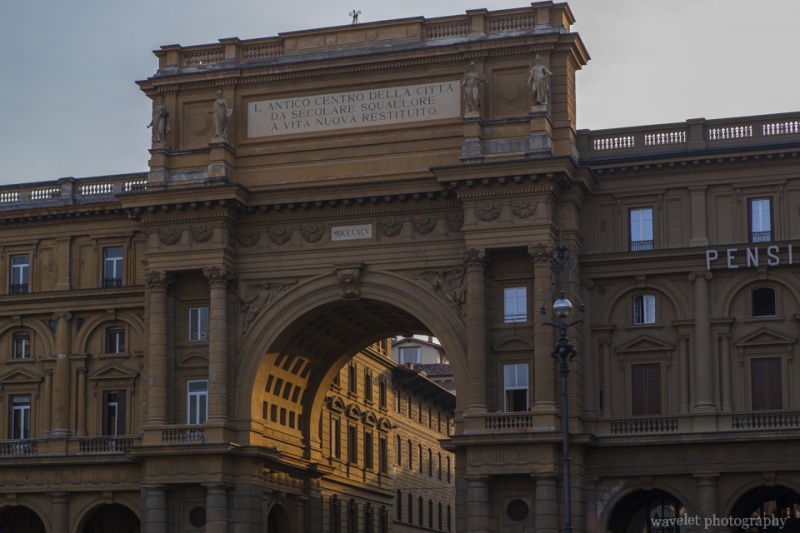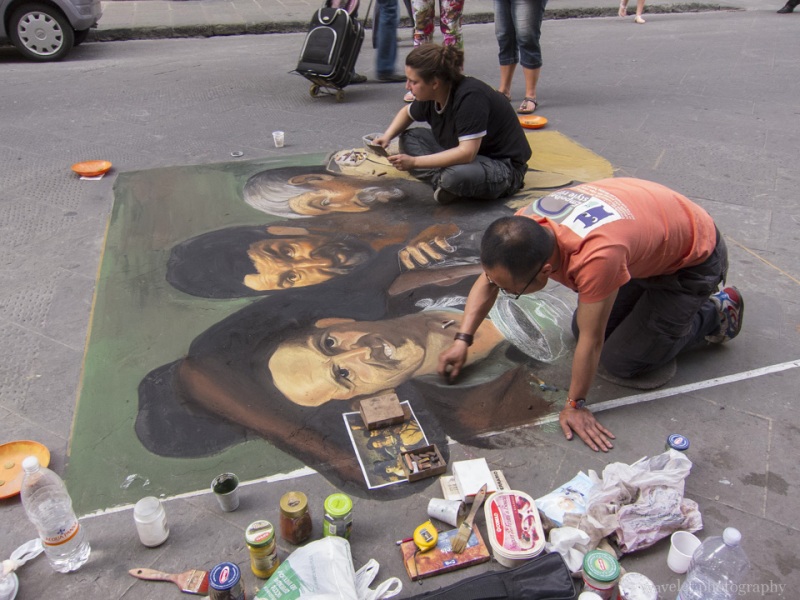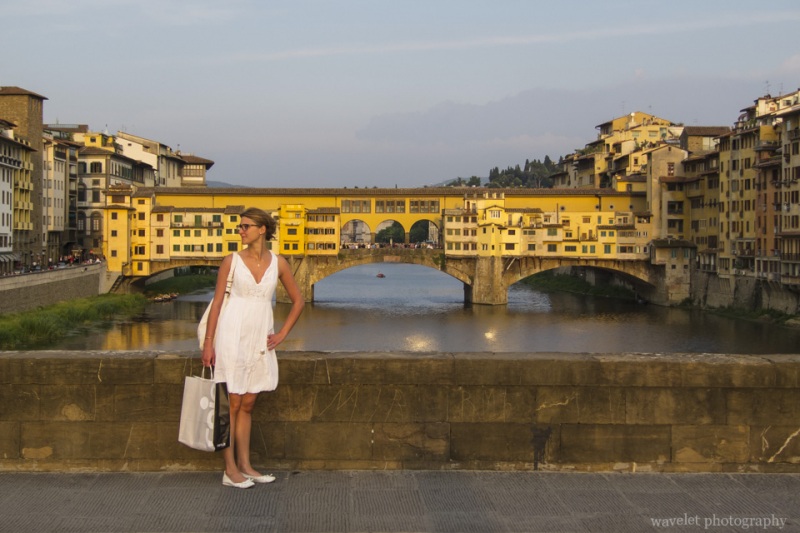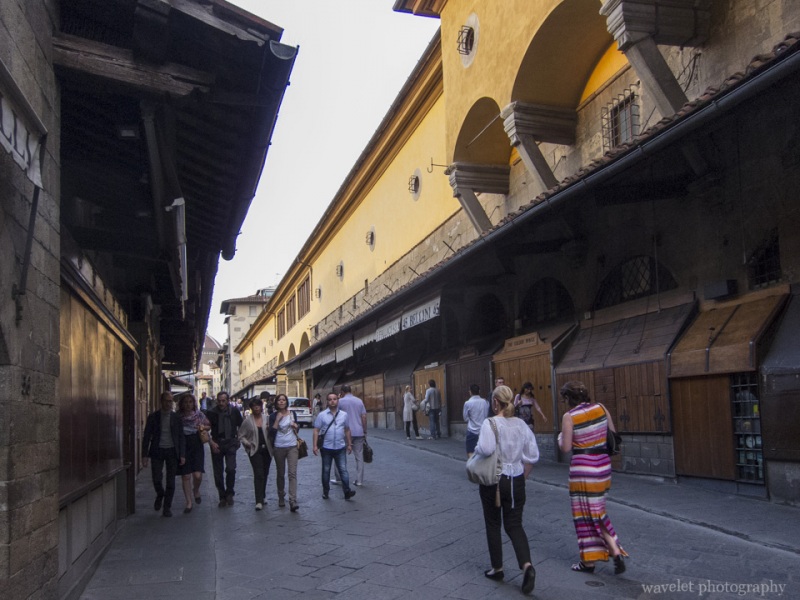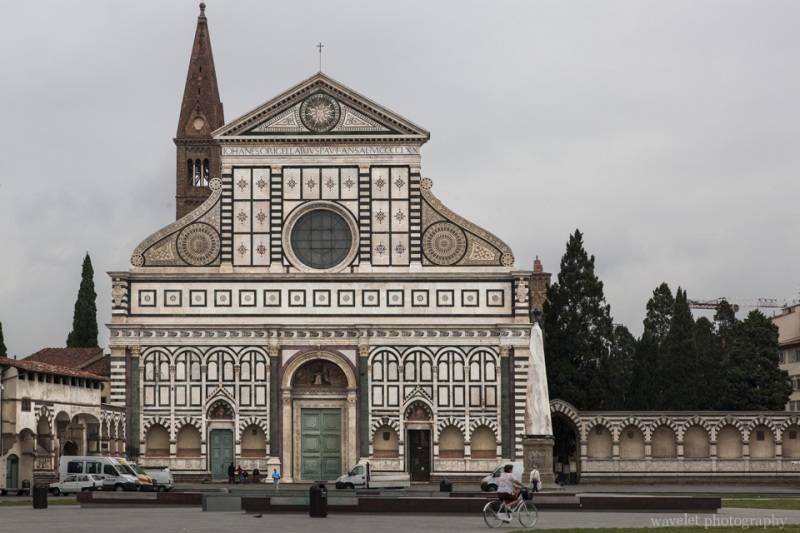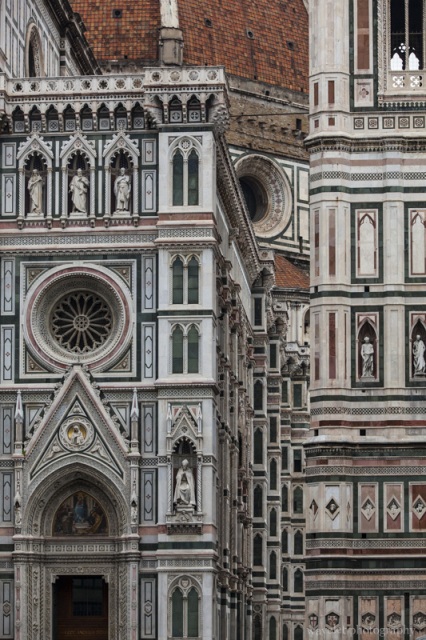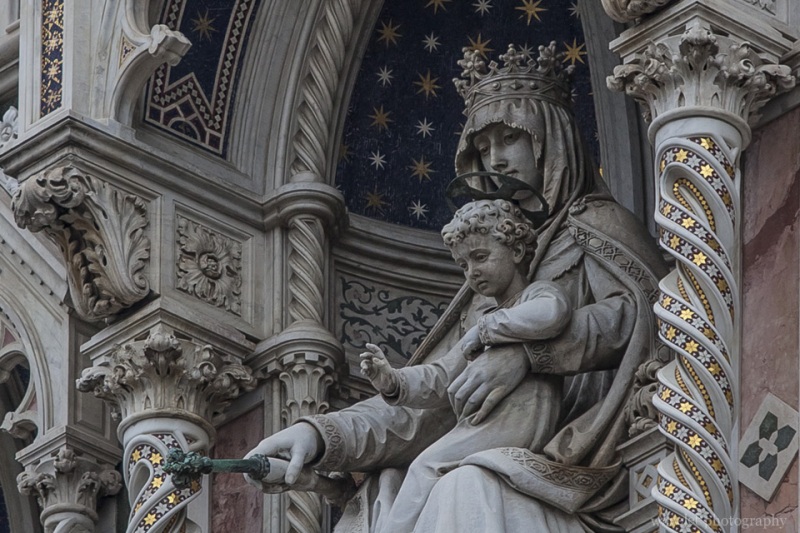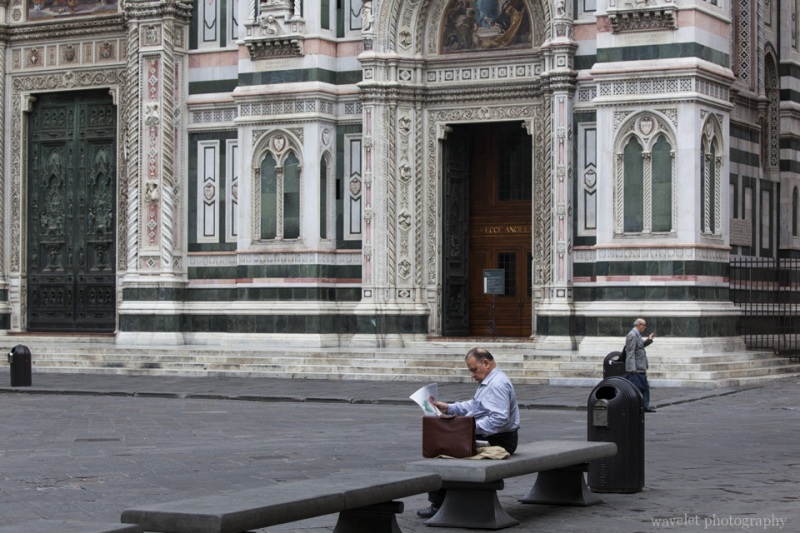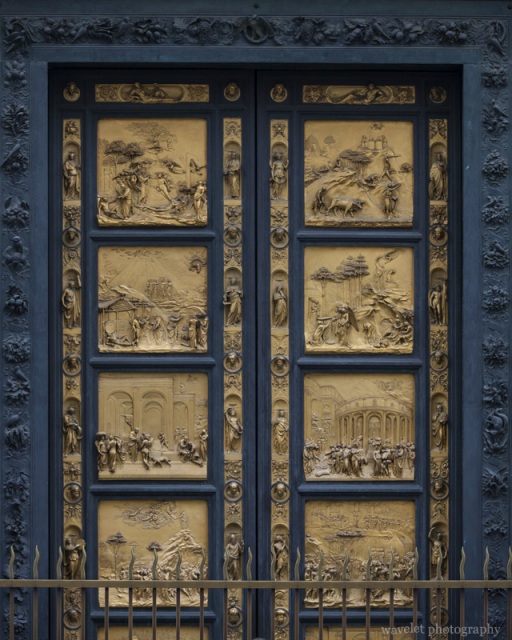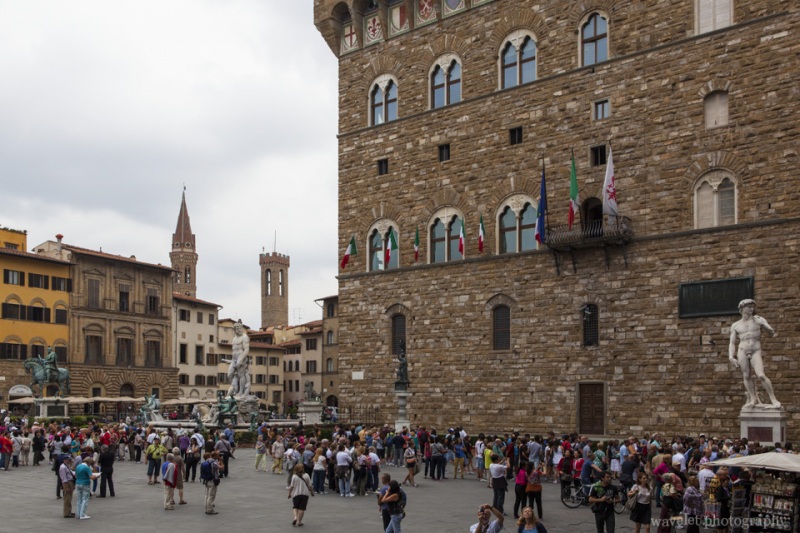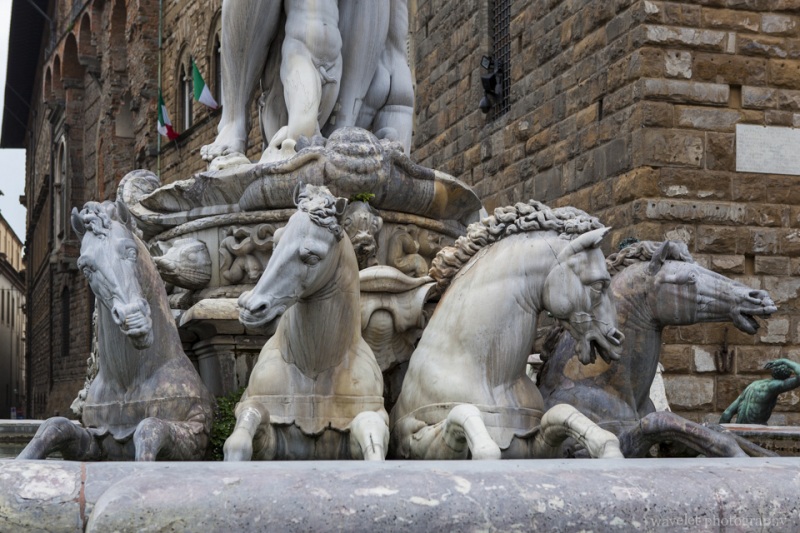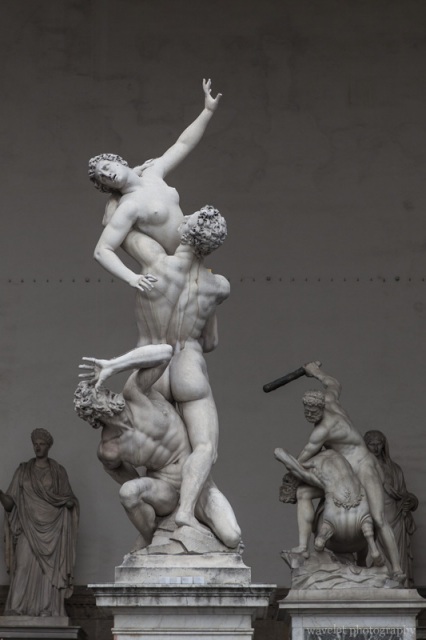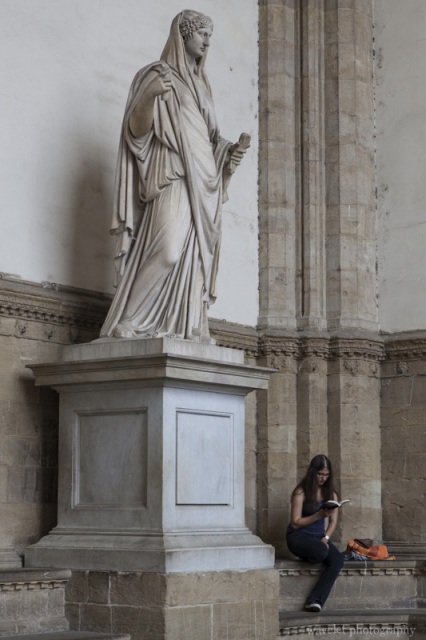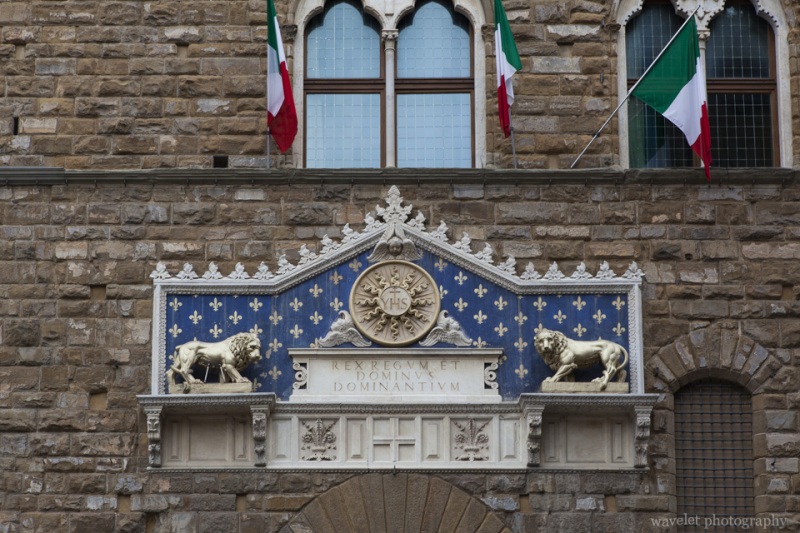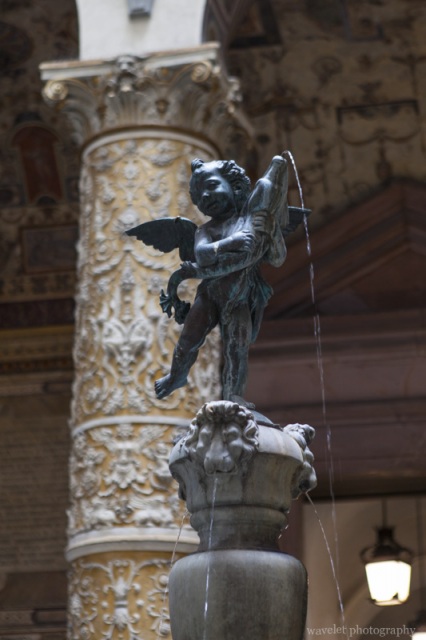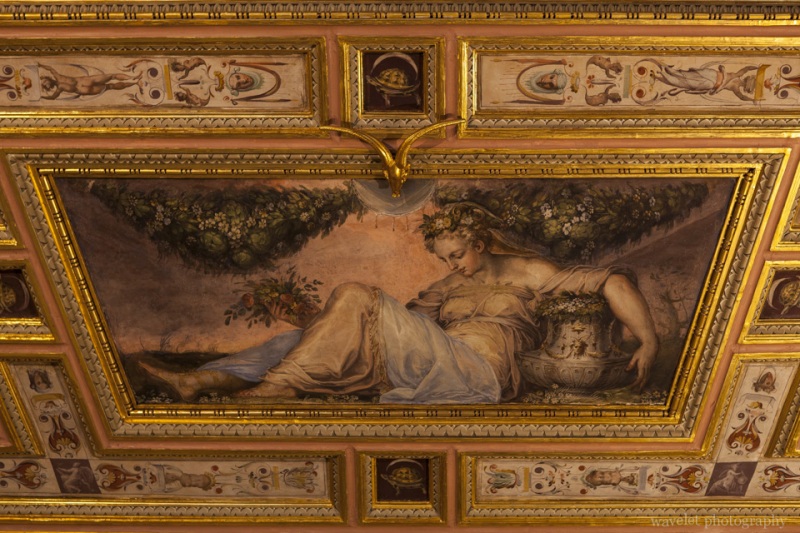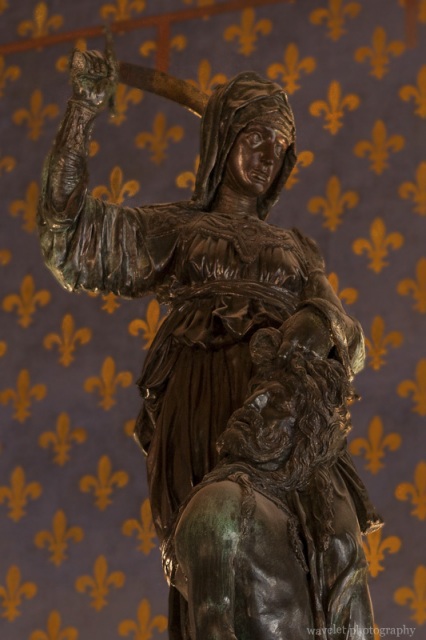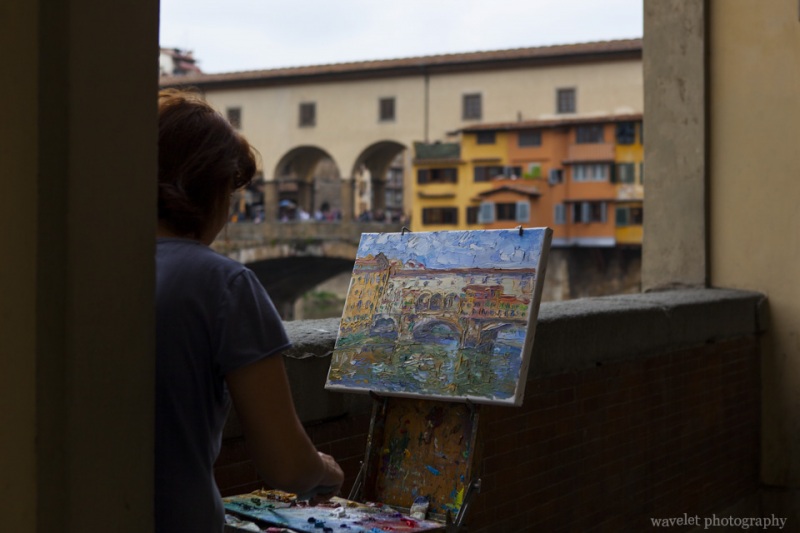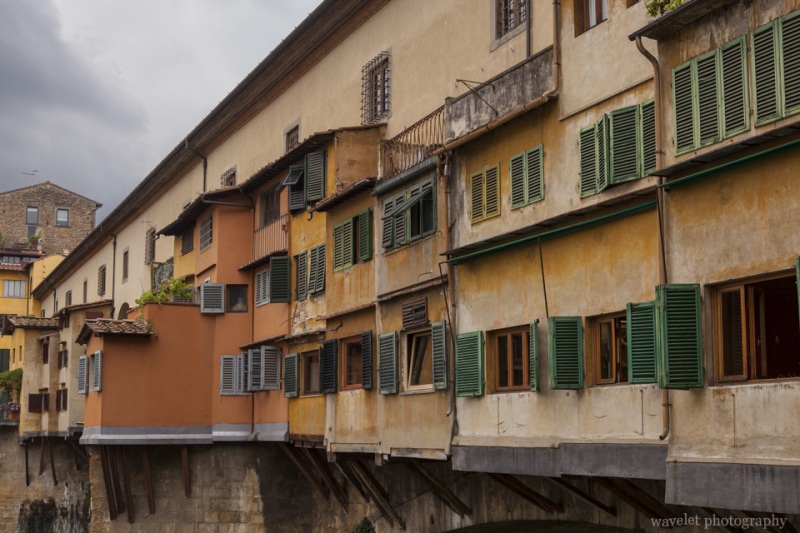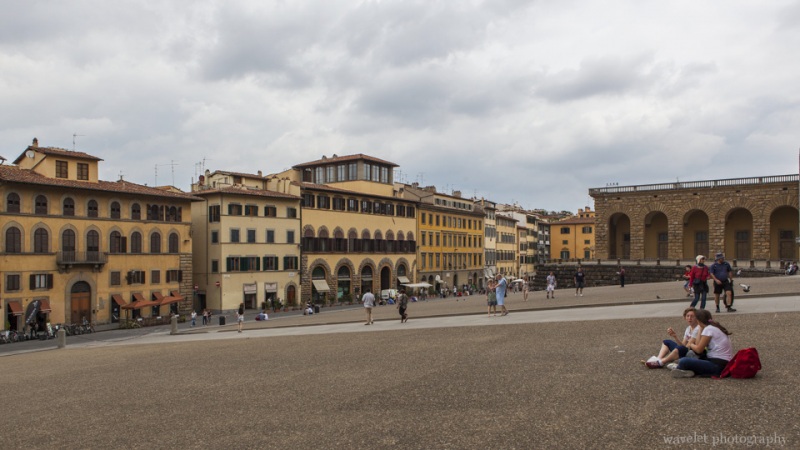2012.5.31~6.1We booked Strozzi Palace Hotel for 3 nights at Florence. One nice thing about Florence is that its historic district is a very compact area, and the hotel is wonderfully located at the center of it. We got a spacious suite at the top of the building, room Michelangelo. Our neighbor was room Raphael.
It’s about 6pm. Walked one block from the hotel, through the triumphal arch, we arrived in Piazza della Repubblica. It’s a lively square filled with street artists and tourists. The piazza is surrounded by bars and cafès. Many of them have long history being the popular meeting place for artists and scholars.
We continued walking toward the River Arno. The streets were crowded by the tourists. We didn’t go to Ponte Vecchio right away, but walked along the river to have a better view of the Old Bridge. This is one of the most famous landmarks of Florence. We crossed the river by Ponte Santa Trinita and went back to Ponte Vecchio from the other side of the river. There are shops built on both side of the bridge. Once taken by butchers before Renaissance, now these are jewellery stores and galleries.
At the middle of the bridge, the area around the statue of Benvenuto Cellini is open to the river. Many people sit around listening to Claudio Spadi (with Luca Sciortino) playing his music. He performs regularly here often till dark and has become a quite famous scene of Ponte Vecchio. The warm light of the sunset was reflected by the water and windows by the river and illuminated people with beautiful backlit. We stood by the bridge and watched him play for at least 7 or 8 songs till the sun set below the horizon.
The second day morning, as usual, I got up at 6am and had a walk around the city. I first went to the piazza where the city’s principal Dominican church, Basilica of Santa Maria Novella, is located.
Then, I walked to the Duomo of Florence, Basilica di Santa Maria del Fiore. The construction of the original cathedral begun in 1296 and took more than 100 years to complete. The original façade was never finished. In 16th century, it’s even torn down because it’s considered outdated in Renaissance times. The church was left without a façade until 19th century, when the richly-decorated new façade was rebuilt in green and red marbles.
We started our city tour after the breakfast. The first stop is the Piazza della Signoria. It is one of the most famous attractions in Florence thanks for the statues (some are copies) still standing around the piazza and the Loggia dei Lanzi, including David and The Rape of the Sabine Women. The piazza is not only the political hub of the city, but also a symbol of the city as the center of Renaissance. It is so famous that at any given time there were at least 3 or 4 tour groups visiting the piazza. It is the most crowded place of all our trips.
The massive building with an imposing bell tower overlooking the Piazza della Signoria is Florence’s city hall, Palazzo Vecchio (gallery). Enter the building, we were impressed by the huge chamber that can accommodate almost 1000 people. It was holding a school meeting at the time we visited. Large frescoes that depict battles with Pisa and Siena cover the west and east wall. The second floor contains several apartments and rooms that are used for arts exhibition. Many of them are the works of Giorgio Vasari.
Leaving the city hall, we walked through the loggia of Uffizi by Arno. This is also the innovative work designed by Giorgio Vasari who opened up the courtyard and made it a public piazza and street. Crossed the river, we went to Palazzo Pitti (official site), but we didn’t enter the museum. We went back to the hotel to have a noon rest.
